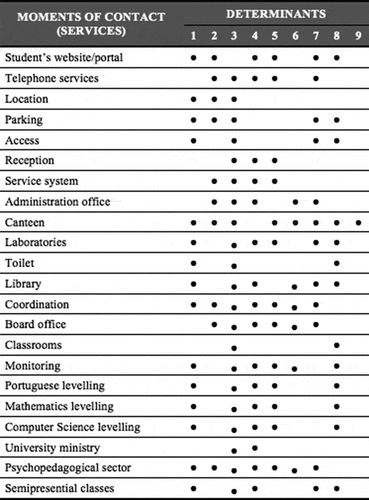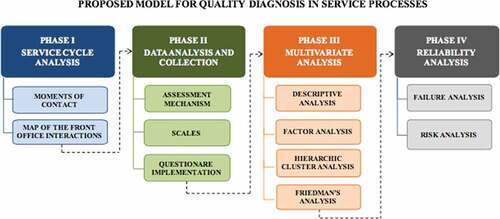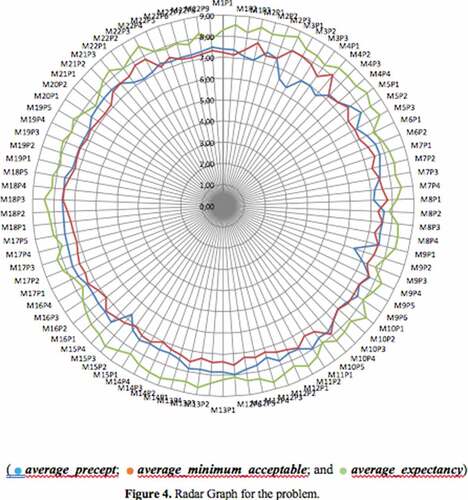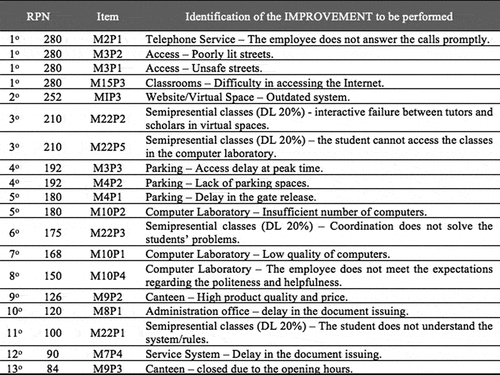Figures & data
Table 1. Survey of publications with the “Management in Services” topic and its approaches
Table 2. Survey of publications with the “quality performance measurement service processes education” topic and its approaches
Table 3. Identification of the approaches in the analyzed publications
Figure 2. Chart with 22 moments of contact (services; constructs) versus 9 determinants: 1-Access; 2-Speed; 3-Ambience; 4-Competence; 5-Consistency; 6-Flexibility; 7-Reliability; 8-Tangibility; 9-Cost

Table 4. Analysis of the assessment scales
Table 5. Reliability, convergent validity and dimensionality of constructs (1Extracted Variance—EV; 2Cronbach’s Alfa—CA; 3Composite Reliability—CR; 4Sample Suitable Measure from Kaiser-Meyer-Olkin—KMO; 5Dimensionality)
Table 6. Descriptive analysis of indicators
Table 7. Characterization of groups concerning questions
Table 8. Friedman’s test for analysis of expectation, minimum acceptable and observed





